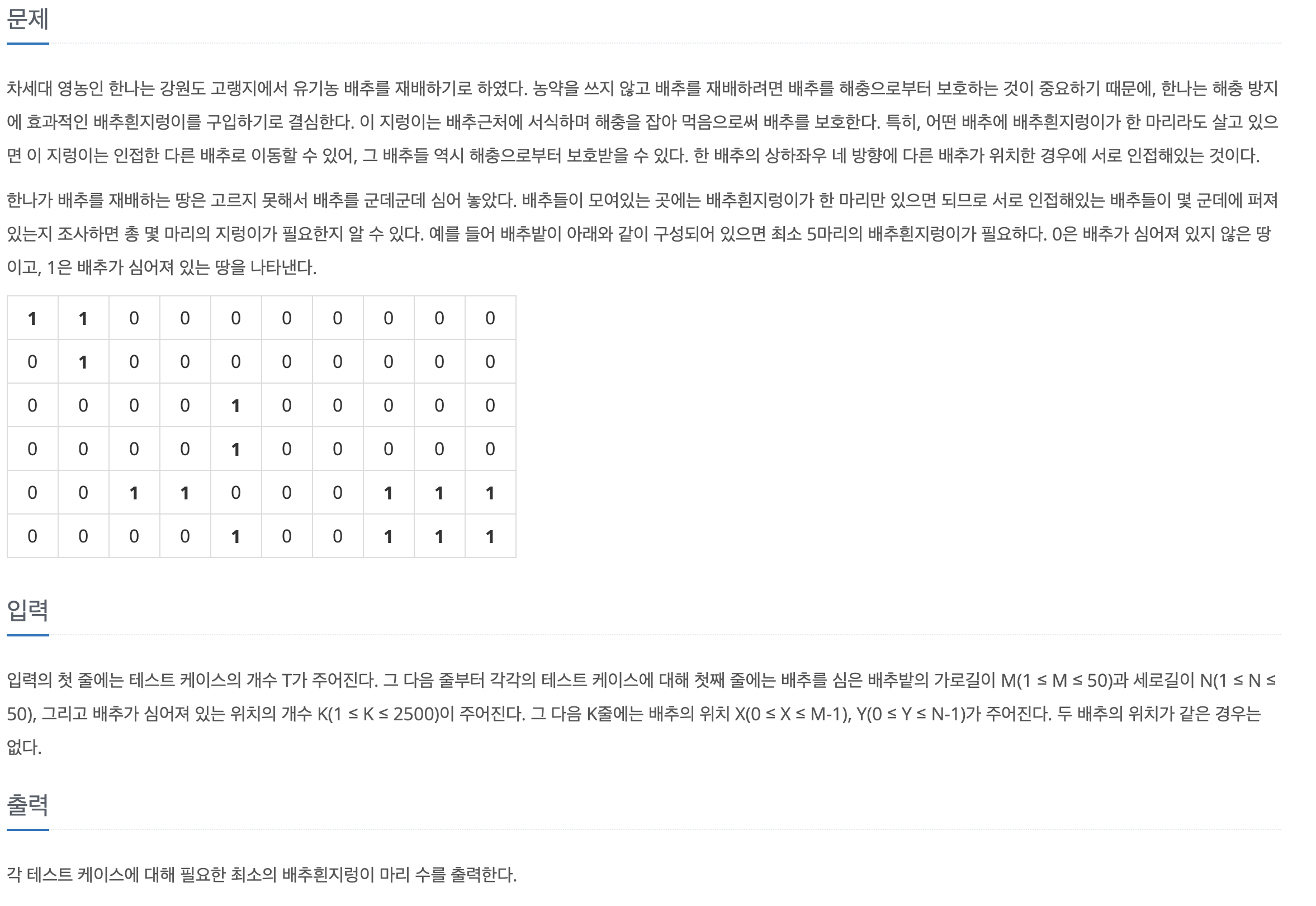문제

코드
#include <iostream>
#include <cstring>
using namespace std;
int dir[4][2] = {{0,1}, {0,-1}, {1,0}, {-1,0}};
int T, M, N, K;
bool visited[51][51];
int ground[51][51];
void dfs(int r, int c){
if (r < 0 or r >= N or c < 0 or c >= M or visited[r][c]) return;
visited[r][c] = true;
for (int i = 0; i < 4; i++){
int nr = r + dir[i][0], nc = c + dir[i][1];
if (nr < 0 or nr >= N or nc < 0 or nc >= M) continue;
if (ground[nr][nc]) dfs(nr, nc);
}
}
int main(void){
cin.tie(0);
ios_base::sync_with_stdio(false);
cin >> T;
for (int test_case = 0; test_case < T; test_case++){
int cnt = 0;
cin >> M >> N >> K;
memset(visited, false, sizeof(visited));
memset(ground, 0, sizeof(ground));
int x, y;
for (int i = 0; i < K; i++){
cin >> x >> y;
ground[y][x] = 1;
}
for (int i = 0; i < N; i++){
for (int j = 0; j < M; j++){
if (ground[i][j] and !visited[i][j]){
cnt++;
dfs(i, j);
}
}
}
cout << cnt << "\n";
}
return 0;
}접근
배추가 있는 부분에 벌레가 최소 하나씩 있으면 된다. 따라서 인접하게 위치하는 배추 군락(?)을 찾아주면 된다. 이를 위해 dfs 탐색을 했다. 방문했던 배추 위치는 다시 방문하지 않기 위해 visited 배열을 사용했고 한 군락을 발견할 때마다 개수를 증가시켜준다.
